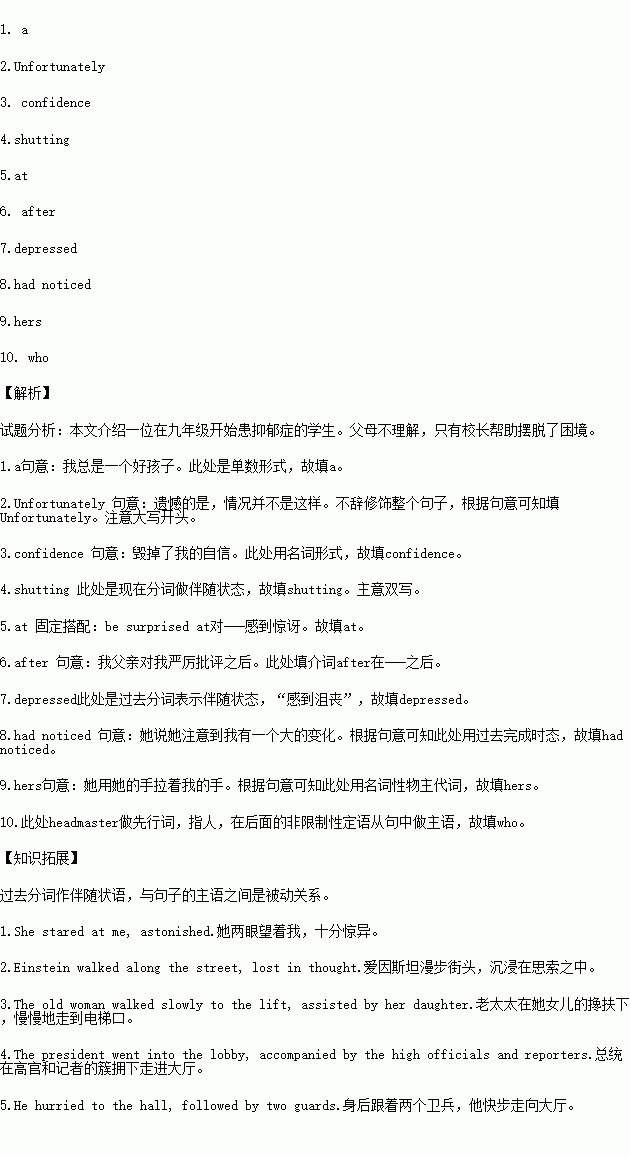题目内容
阅读下面材料,在空白处填入适当的内容(1个单词)或括号内单词的正确形式。
I was in the ninth year when I began to suffer from depression. My parents noticed but felt that since I’d always been 1. good child, this was temporary.
__2.__(fortunate), it was not to be so. I didn't have friends. Hardly could I share my problems. Deep worry began to destroy my __3.__(confident). Finally I refused to attend classes, __4.__(shut) myself in my room for hours.
The examination was approaching, but I simply didn't care.? My parents and teachers were surprised 5. my bad performance. One morning, __6.__a particularly severe lecture from my father, I stood at the school gate, __7.__ (depress).Then as the other students marched to their classrooms, our headmaster called me. The next forty-five minutes was one of the most precious moments in my life. She said she _8.__(notice) a big change in me and wondered why. At first she took my hands in _9.__(she) and listened patiently as I mentioned my worries. Then she hugged me as I wept. Months of frustration and loneliness disappeared in her motherly hug.
No one had tried to understand what the real problem was except the headmaster, __10._ helped me out simply by listening and hugging.
 期末集结号系列答案
期末集结号系列答案
